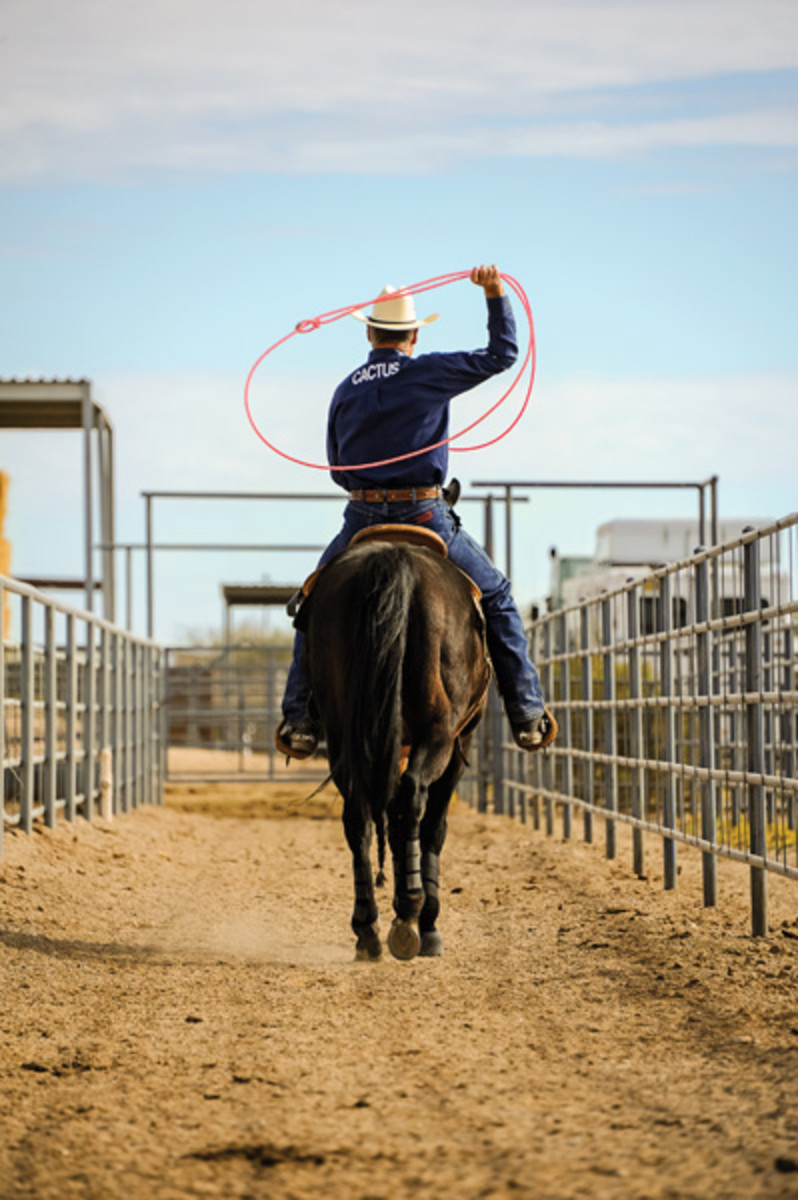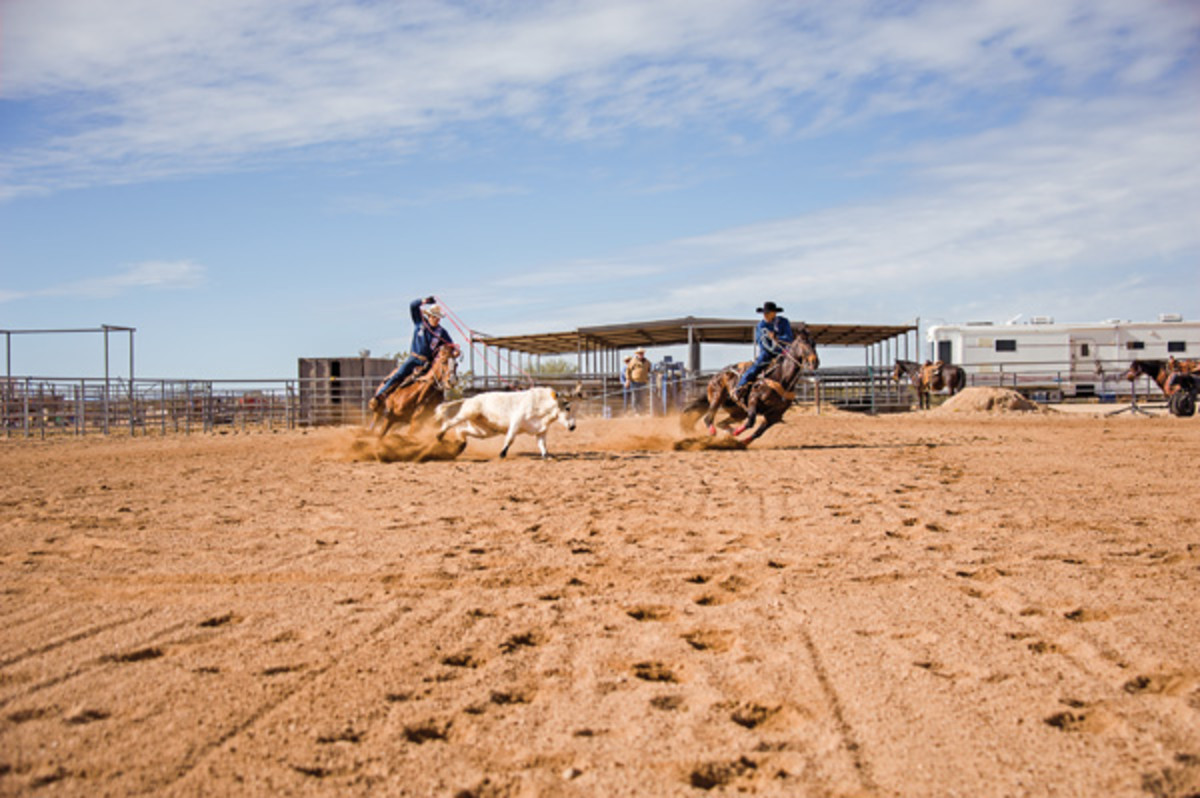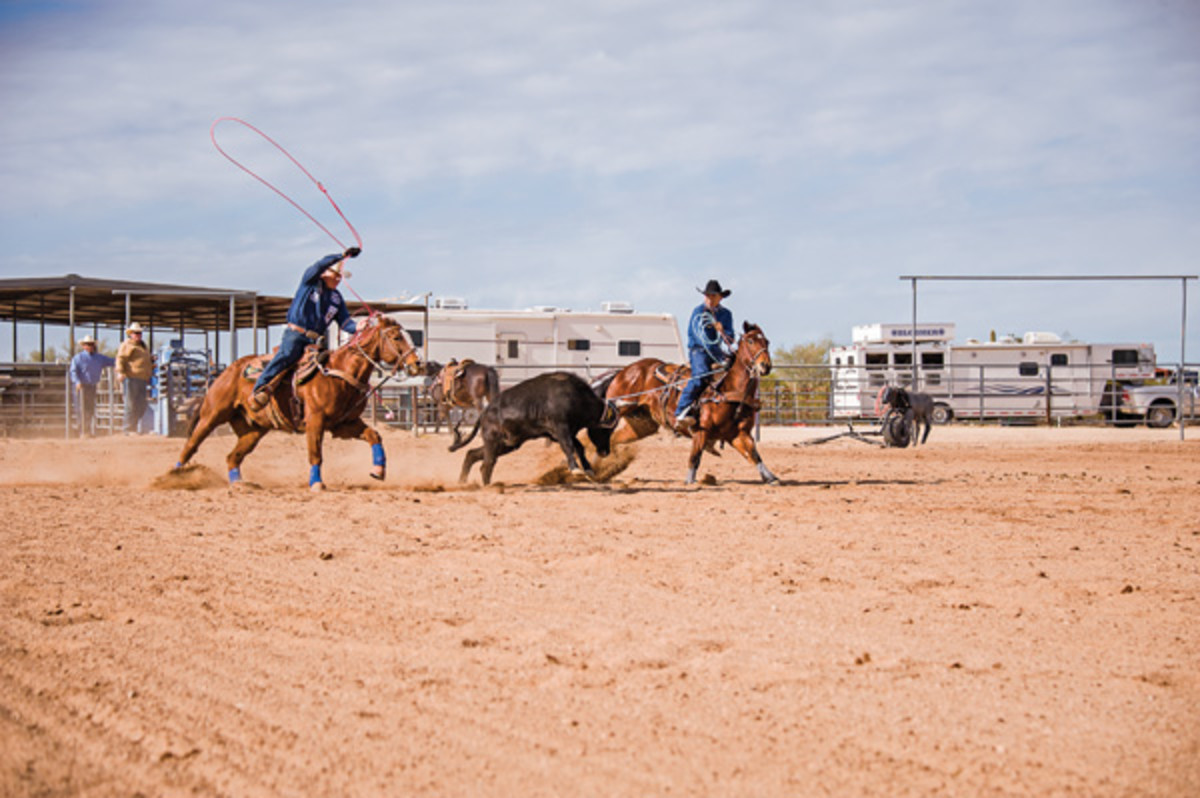One of the elements of roping that’s the most different from roper to roper is the swing. People figure out their own way of doing it, and it can be totally opposite or different from the next guy and yet it’ll still work. Everyone basically figures out how to make his or her style of swinging a rope work. The swing functions as a power source, and also as a way of aiming your throw to the target in the delivery of the loop. The angles that you use in the swing determine what you’re able to do with it. When you learn to swing a rope as a little kid, you develop gifted abilities with your swing that you really take for granted. You don’t even really realize it. People who start roping later in life typically find it harder to master the mechanics of the swing when it’s not second nature from childhood.

I started swinging a rope when I was 2 or 3 years old and roping little dummies I made. At that age, you learn by watching and by doing. When you’re young your swing kind of naturally develops into a feel for where your rope is. Hand-and-eye coordination develops, and by the time you’re 13 or 14 and have been swinging a rope for 10 years, it’ll go right where you want it to go.
The biggest thing I’ve found is that simplicity is kind of the best way to go when it comes to the swing. Working with some of the best teachers in the world, and doing schools with guys who teach all the time, I’ve learned that everybody— including myself—tries to teach people to keep it simple when it comes to their swing. That basically boils down to a swing where it’s angled right, aimed right and operating in a smooth, efficient, powerful swing that will help you do what you need to do with it
Everybody who’s a teacher out there figures out that sometimes too much is harmful when it comes to the swing. When people want to be really fancy with the swing and get a lot of curl with the loop, and it starts to become an obstacle instead of something that’s helping them. When I’m teaching, I try to explain that the palm side of the loop is the catching side that goes on the horns or the feet of the steer, or the neck of the calf. It always needs to be pointing toward the target.
It looks cool to turn your rope over and really swing it in a stylistic fashion, but that’s when you turn the back side of the loop toward the target. And when I do that, I start having problems. It’s important to keep the power source in the right direction to help the loop work properly.

A swing that’s more front to back and back to front is not quite as good as a swing that moves right to left when you’re heeling steers. If your power source is moving right to left, then the motion you’re putting on the swing is helping move the tip across the feet, which helps you get the loop in front of the feet. The power source needs to pull across the feet in the swing if you want the tip to go out the left side. If you just throw the loop straight in front of you, that’s where it’s going to hit.

If there’s one thing people probably overdo, it’s turn their rope over too much, which is rotating the bottom of the loop over the top of the top part of the loop in the swing too much. It’s okay if it rolls over, but it’s helpful if it doesn’t roll over until the tip gets past the steer. If it rolls over before the tip gets to the steer it makes it hard to control and place the bottom of the loop consistently and correctly with a swing that’s turning over too much. SWR










